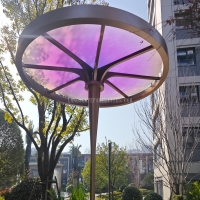Welcome to the website for landscape facilities products and knowledge.
How does the bin’s design minimize the escape of gases from decomposing waste?
Modern waste bin designs incorporate several innovative features to minimize the escape of gases produced by decomposing waste. One key element is the use of airtight seals, which prevent gases like methane and hydrogen sulfide from leaking into the surrounding environment. These seals are often enhanced with rubber gaskets or locking mechanisms to ensure a tight closure.
Another critical design aspect is the inclusion of activated carbon filters. These filters absorb odorous gases, neutralizing unpleasant smells before they can escape. Some advanced bins even feature dual-layer lids with inner membranes that further trap gases while allowing easy waste disposal.
Additionally, many eco-friendly bins are made from materials that resist corrosion and degradation, reducing the likelihood of cracks or gaps where gases might leak. Ventilation systems with one-way valves are also employed in certain designs, allowing minimal airflow to prevent pressure buildup while still containing harmful emissions.
By combining these technologies, waste bins effectively reduce gas escape, improving hygiene, odor control, and environmental impact. Such designs are particularly valuable in urban settings and households aiming for sustainable waste management solutions.
Related search:

Recommendation
Metal frame with gradient color acrylic combined with high-end shading landscape facilities